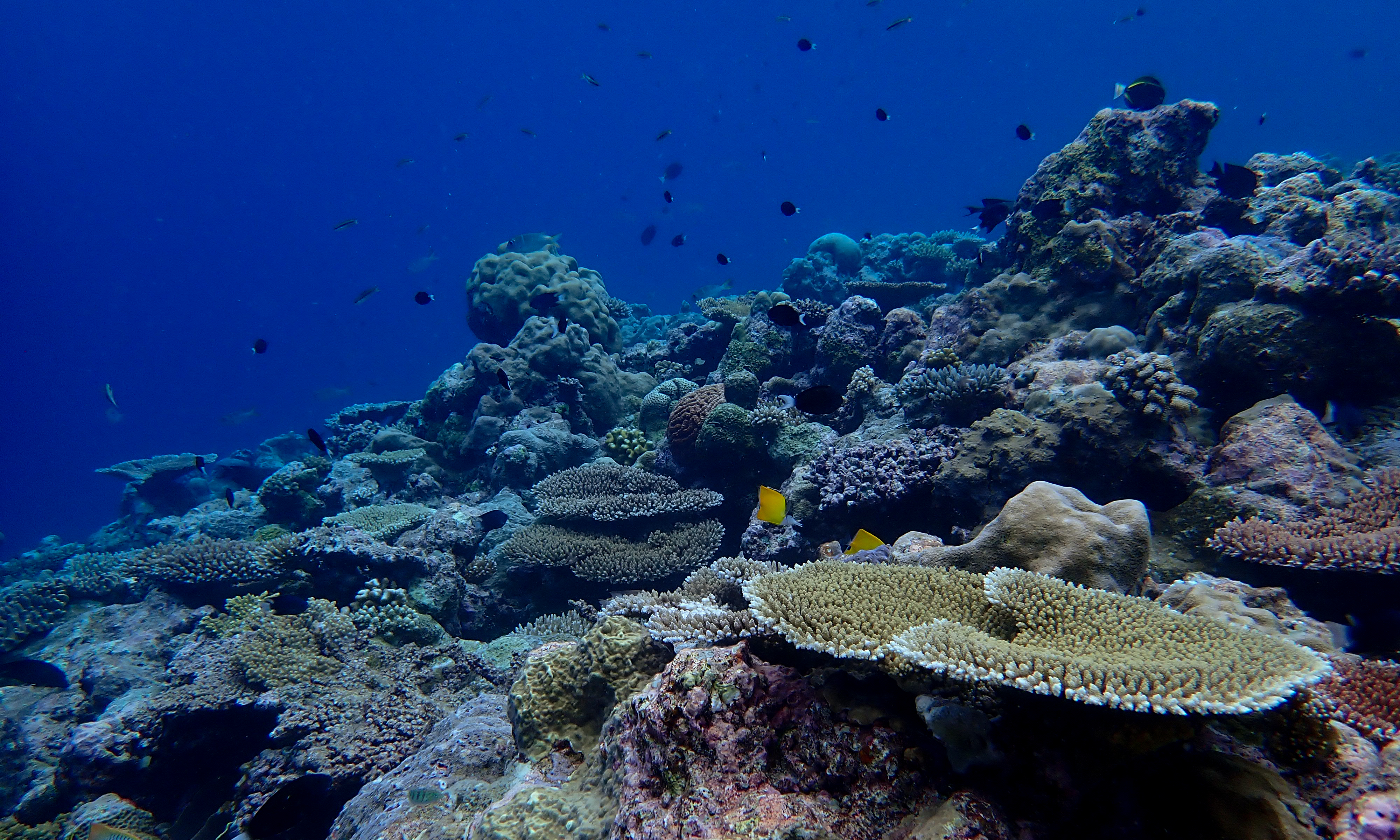Over the coming decades, reef-building corals will face ever hotter ocean temperatures, yet it remains unknown if their thermal tolerance can keep up with the pace of warming. A new study reveals that coral thermal tolerance in Palau has likely risen by 0.1 °C/decade since the late 1980s. Despite this ecological resilience, strong action on climate change remains a priority to protect coral reefs.
Views 2754
Reading time 3 min
published on Dec 29, 2023
Coral reefs are
remarkable ecosystems estimated to harbour over
a quarter of all marine biodiversity. They create habitat for seafood species that in turn provide protein for millions of people, support coastal tourism and fisheries and protect coastal communities from storms and flooding. Yet, reef-building corals are highly sensitive to increases in temperature of even 1°C above normal warm-season levels.
Corals live in symbiosis with microscopic algae. Similar to us and our gut microbiome, corals cannot survive without their symbionts. These algae give corals their beautiful colours and nourish them through photosynthesis. However,
the symbiosis breaks down under heat stress: without microalgae coral become stark white, or bleached, which usually leads to death. Extreme temperatures can even kill corals outright.
In Palau, an island nation in the western Pacific ocean, coral reefs experienced intense marine heatwaves in 1998, 2010, and 2017. Curiously, bleaching impacts were fewer in each successive event. Similar trends had also been observed in
Australia’s Great Barrier Reef,
French Polynesia, and
Southeast Asia.
We set out to test whether thermal tolerance of Palauan corals had increased over the past three decades. Our team designed a simulation study, using 35 years of sea surface temperature data and historic bleaching survey records. We found that the thermal tolerance of Palauan coral communities likely increased at 0.1 °C/decade, indicating an innate level of climate resilience.
Various mechanisms could explain such trends. (1) Through species-turnover, severe heatwaves could weed out the sensitive species leaving the tougher ones behind, coming at a cost to important ecological functions like reef growth. (2) Genetic adaptation through natural selection could lead to increased prevalence of genes associated with thermal tolerance in populations. (3) Acclimatisation of coral individuals to low-level thermal stress within their lifetime could improve their later survival under high-level thermal stress. These processes can also occur in the microalgae communities living within each coral, so an upcoming challenge will be to disentangle the role of these mechanisms in shifting thermal tolerance in Palau and elsewhere.
We then tackled the question of whether the emergent rise in tolerance for Palau is sufficient to keep pace with ocean warming. Using high-resolution future temperature projections from 17
global climate models, our analysis reaffirms the scientific consensus; the future of coral reefs ultimately depends on collective global action on rapidly reducing carbon emissions. However, bleaching impacts could be avoided on some reefs, or at least delayed, if coral thermal tolerance can continue to rise at the historic rate.
While this provides a glimmer of hope and may mean there is some additional time to implement adaptive management solutions, this all hinges on rapid climate action. The number of reefs that escape bleaching conditions drops rapidly under the hotter climate futures.
Novel ideas are currently being investigated to
help corals persist into the future. These include conventional conservation measures, like marine protected areas; restoration and rehabilitation efforts such as planting or reseeding reefs with corals or larvae; as well as more experimental interventions to boost their thermal tolerance artificially, for example, through selective breeding. Restorative interventions offer promise at small spatial scales, but much more research is needed to fully harness their potential.
Coral reefs clearly have some level of innate climate resilience which could reduce projected bleaching impacts over the coming decades. However, we still don’t know whether such reefs will continue providing the goods and services that society needs. Ultimately, concerted global action on reducing carbon emissions is the only sure way of securing a future for coral reefs.
Original Article:
Lachs, L., Donner, S. D., Mumby, P. J., Bythell, J. C., Humanes, A., East, H. K., & Guest, J. R. (2023). Emergent increase in coral thermal tolerance reduces mass bleaching under climate change. Nature Communications.
 Earth & Space
Earth & Space



